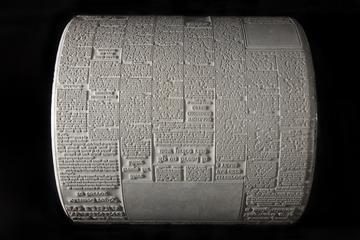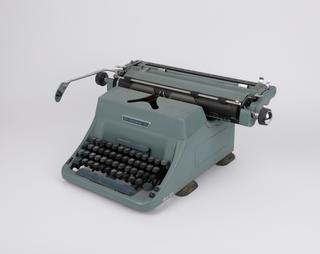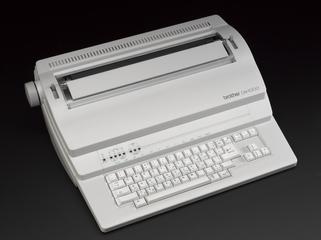
Picht Braille typewriter
- Made:
- 1899

Picht Braille typewriter, c. 1899. The machine used 9" wide paper that was fed on a wooden drum. The keys were made of wood with metal dots indicating the dot position on the front of each key. The machine consists of six keys in a fan shape, which one can simultaneously press, every key presses the six Braille dots on the paper.
The Picht Braille typewriter or braillewriter was invented by Oscar Picht in Bromberg, Germany in 1899 to press Braille six-dots onto paper. Oscar Picht was a teacher for the blind and partially sighted, a German typhlotechnician and designer of several types of typewriters for the blind. He was director of the Provincial School for the Blind in Bromberg, Germany, and later director of the State Blind Institute Berlin-Steglitz. The Picht Braille typewriter was first manufactured in 1899 by the company B.R. Herde and F.R. Wendt - so this is a very early example - and production continued until the 1930s.
Louis Braille developed his Braille tactile system aged 15 years old, having lost his sight at a young age. Braille is a system in which raised dots in a six-dot cell represent each letter of the alphabet as well as equivalents for punctuation marks and symbols to show letter groupings, Braille is read by moving your hands from left to right along each line. Despite its contemporary popularity, Braille did not become universal in Louis’ lifetime— he died in 1852 and it was only adopted in France and England in the late 1800s (and later worldwide).
Details
- Category:
- Printing & Writing
- Object Number:
- 1966-285
- type:
- braille typewriter
- credit:
- University of London Library




